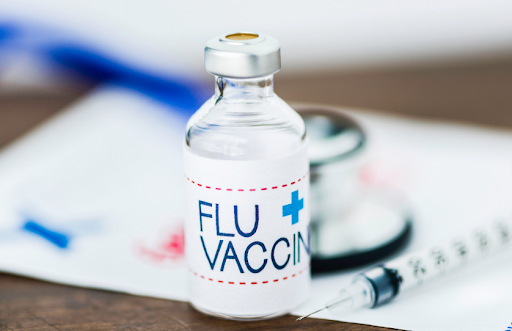Healthcare
Being proactive will help families and children conquer flu season

Back to school season also means bringing back germs. When August and September rolls around, most parents and students are excited about what the new school year will hold. Kids get to see their friends and participate in sports and other extracurricular activities, while parents get a little more time in their days to be kid-free. It’s also the time of year when students have the opportunity to learn and grow in an environment that promotes success. These are the positives of the back to school season, but unfortunately this also brings positive flu, COVID-19 and RSV tests.
Doctors and nurses across the board attribute school with a rise in these illnesses. More kids are being put in spaces together, where germs and sickness are easily transmissible. When it gets to those winter and colder months, children are not playing outside as much and are instead spending most time indoors. This also creates a spread of these viruses, and once it starts it’s even harder to stop.
The CDC reports that 35 million people have tested positive for the flu this past season. Even though this year had a more moderate severity, 400,000 people were still hospitalized and 25,000 people died. These numbers might not be as high as previous years, but it’s still enough that more preventive and proactive measures can be put in place. Whether it’s ensuring kids are vaccinated against viral diseases, or healthcare organizations are being more organized to help take care of everyone, there are ways to manage the effects of flu, COVID-19 and RSV.
“The time for prevention is now. Hospitals and healthcare organizations need to start implementing more efficient systems and staffing in place to help manage the imminent influx of illnesses as the school year begins. Figuring out how to manage paperwork, admissions and appointments will help things flow more smoothly as more people get sick,” says DoorSpace CEO Sarah M. Worthy.
One of the easiest ways to start now and be proactive about the impending flu season is to make sure things are working smoothly internally. When flu season starts to ramp up, urgent cares, hospitals and other healthcare organizations get pretty busy. This means there are more patients to take care of and not enough time or resources to make sure they are getting the highest level of care.
Instead of doctors and nurses spending time doing paperwork and making sure admission records are being tracked properly, healthcare executives could invest in technology that automates these tasks. This will in turn help keep employees afloat and ready to take on new patients. A lot of the time, heavy workloads and unsustainable schedules are synced with higher turnover rates. Why give frontline workers more tasks to do when they have sick patients that need to help?
“Being proactive and making sure places are well staffed is essential. By providing employees with more sustainable shifts and benefits, they will be more likely to stay all the way through the flu and rsv season, instead of leaving. Taking care of your employees means more patients will get taken care of,” Worthy says.
If nurses and doctors are feeling overwhelmed and underappreciated because they are doing multiple things at once, they have a higher chance of leaving. This could then create a cycle of turnover and understaffing that only makes the flu and cold season worse. The only things healthcare workers should worry about is the health of their patients, not employees leaving them to take on an extra workload.
Healthcare organizations should also invest more resources into educating families about how to prevent these illnesses at home. Highlighting the importance of vaccinations, and giving parents the tips and tricks to teach their children about washing their hands or not touching their faces can do wonders. Easy practices like these could be the ultimate navigation tool for the upcoming flu season. Children and adults have the power over their health, they just have to know where to start.
There are no drawbacks to being proactive against the flu season. As kids go back into the classroom, it is just a matter of time before they start to spread germs. Education and internal plans need to be made now, so employees and patients can set themselves up to be happy and healthy.
-

 Press Release2 days ago
Press Release2 days agoThe Next Frontier of NFTs, Anime, and Gaming: How DebitMyData Is Making it Possible to Earn a Living From Your Data through Yourself-An Agentic Avatar that You Create and Own
-

 Press Release15 hours ago
Press Release15 hours agoCREcoin: The Future of Real Estate is Here—And It’s Powered by a Meme Coin Revolution!















